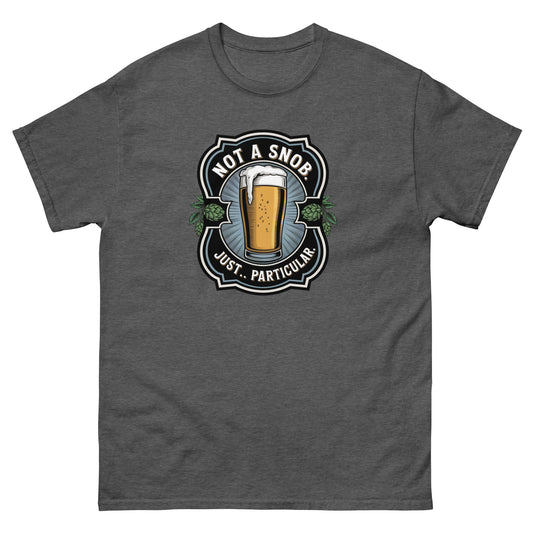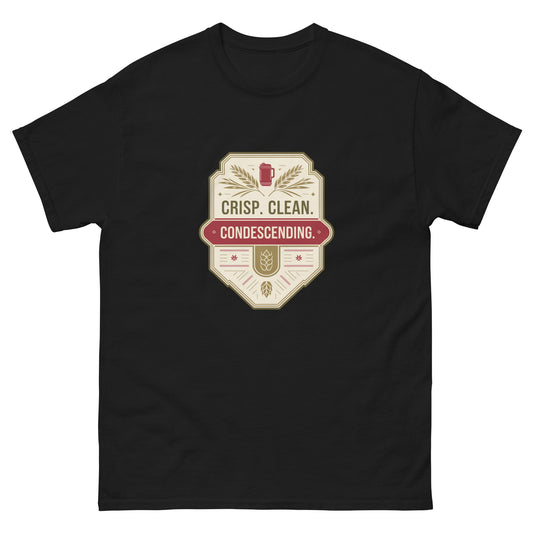Coopers kit lovers, sick of brewing flops? Here’s how to get it right — finally.
Share
A Kit, a Shed, and a Perfect Pour: How to Brew a Classic Aussie Draught
If you’ve ever cracked open a bottle, taken a sip, and thought, “I could do better” — you’re in the right spot. You’re not chasing craft beer trends or piling hops like it’s a competition. You want something honest. Something crisp. Something drinkable that goes beautifully with whatever’s sizzling on the barbie. And truth be told? That’s exactly what Coopers Original Draught is made for.
This humble 1.7kg kit punches well above its weight — a floral malt aroma, clear yellow-gold colour, and that satisfying, clean finish you'd expect from the taps at your favourite old-school pub. And good news? You don’t need a lab coat or five-thousand-dollar setup. Just a brew can, a weekend, and this step-by-step guide that takes you from tin to tap with no fuss.
What You’ll Need (Basics Only)
- Coopers Original Draught kit – the hero of the day
- 1kg of Brewing Sugar or Dry Malt Extract (DME) – we usually recommend Coopers Brew Enhancer No. 2
- A clean fermenter – 30L plastic barrel with airlock gets the job done
- Sanitiser (don’t skip this)
- Stirring spoon, thermometer, hydrometer (optional but handy)
- Sterile bottles, caps, or a kegging setup
Step 1: Sanitise Like You Mean It
This is where many rookies get stitched up. Even a tiny bit of grime or dodgy sanitising can ruin your beer. Give everything that touches your brew a proper clean — fermenter, spoon, lid, airlock. Not just a quick rinse. Proper scrub and soak. Think of it like prepping your grill before Sunday’s roast. Respect the prep.
Step 2: Wake the Kit
Boil 2–3 litres of water in a kettle or saucepan. While that’s going, sit your Coopers Draught can in some warm water to loosen it up. Open the can, pour the gooey malt extract into your sanitised fermenter, then add your kilo of brewing sugar or enhancer. Rinse the can with a bit of boiling water and chuck that in too. Stir until it’s all dissolved.
Step 3: Fill ‘er Up
Top up with cold water until you hit the 23L mark. Your brew should be sitting somewhere between 21°C and 27°C. If it’s too warm, wait — too cold, give it a warm water bath. Throw in the yeast sachet provided with the kit, keep it clean, and seal it up.
Step 4: Let the Magic Happen (4–7 Days)
Place the fermenter in a stable spot away from direct sunlight — ideally between 20–25°C. A clean corner of the laundry, the shed, or under the stairs often works. You’ll notice a frothy krausen forming on top within a day or two. That’s the yeast feasting on sugars and turning your mix into beer. Leave it to do its thing — patience is your new brewing mate.
“A good beer is 10% recipe, 90% patience. Let nature work before you start tinkering.” – Candeece.
Step 5: Bottle (or Keg) Like a Pro
Once fermentation’s done — usually when the specific gravity stabilises for two days (around 1.008–1.012) — it’s time to bottle. Make sure your bottles are squeaky clean. Add a carbonation drop or a half teaspoon of sugar per 750ml bottle. Fill, cap, and store somewhere mild (20–25°C) for two weeks minimum.
Going down the kegging route? Nice. Use fresh gas, purge correctly, and you’ll have pub-style pints on tap in no time.
The Pour Test
After that two-week secondary fermentation, chill a bottle. Pop the cap. Pour into a clean, well-rinsed glass at a 45-degree angle. Look for that tightly packed head, smell the subtle floral note, and take a sip. This is the moment where you nod to yourself and think, "Yep — I brewed that." Light, crisp, slightly bitter on the finish — it’s everything a good draught should be.
Looking to Tweak Next Time?
That’s the beauty of homebrewing — you can change one thing at a time and track the results. Want more hop aroma? Dry hop with 10g of Cascade hops on day four. Like it slightly maltier? Sub 500g of brewing sugar for additional Liquid Malt Extract. Keep notes. Keep learning.
Quick Tips from Behind the Counter
- Fermenter too cold? Wrap it in an old jumper or grab a heating belt next time.
- Not sure about yeast quality? Try a fresh Cooper's ale yeast packet from the fridge section in-store.
- Want smoother carbonation? Use carbonation drops — simple, clean, reliable.
A Shed Full of Gear Is Great. A Beer You’re Proud to Share Is Better.
No tricky gadgets. No confusing lingo. Just a trusty tin, a simple process, and real flavour. Brewing your own Coopers Draught is as close to bootstrapped beer perfection as it comes — made for weekends by blokes and sheilas who just want their mates to say, “You made this? Bloody oath.”
Catch you next brew,
Candeece

Stay Connected
Join our homebrewing community: Beer and Barrel Society on Facebook
Follow our Facebook Page: Strathalbyn H Hardware on Facebook









